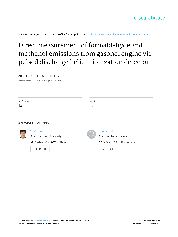摘要
Unregulated formaldehyde (HCHO), acetaldehyde (CH(3)CHO) and methanol (CH(3)OH) emissions from M10 blend (methanol/gasoline = 1/9 in volume) fuelled spark ignition (SI) engine were directly detected by a gas chromatography (GC) with a Gs-OxyPLOT capillary column and pulsed discharge helium ionization detector (PDHID). Chromatograms show that HCHO and CH(3)OH are well separated and linearly responded on PDHID within the range of 0.8-800 mu g/L. The method is proved suitable and reliable for measuring unregulated pollutants from the engine. Experimental results show that compared with gasoline, HCHOemission from M10 is greatly larger while CH(3)CHO is smaller. HCHO emission increases while CH(3)OH emission decreases with engine speed and tailpipe temperature. The three-way catalytic converter (TWC) can remove over 85% of CH(3)OH and CH(3)CHO emissions when it is lightened off. However, an unfamiliar phenomenon of minus HCHO conversion efficiency happens when engine speed is over 3500 r/min, which infers that TWC may enhance HCHO emission rather than weaken it at high engine speeds.
- 出版日期2010-9
- 单位西安交通大学
